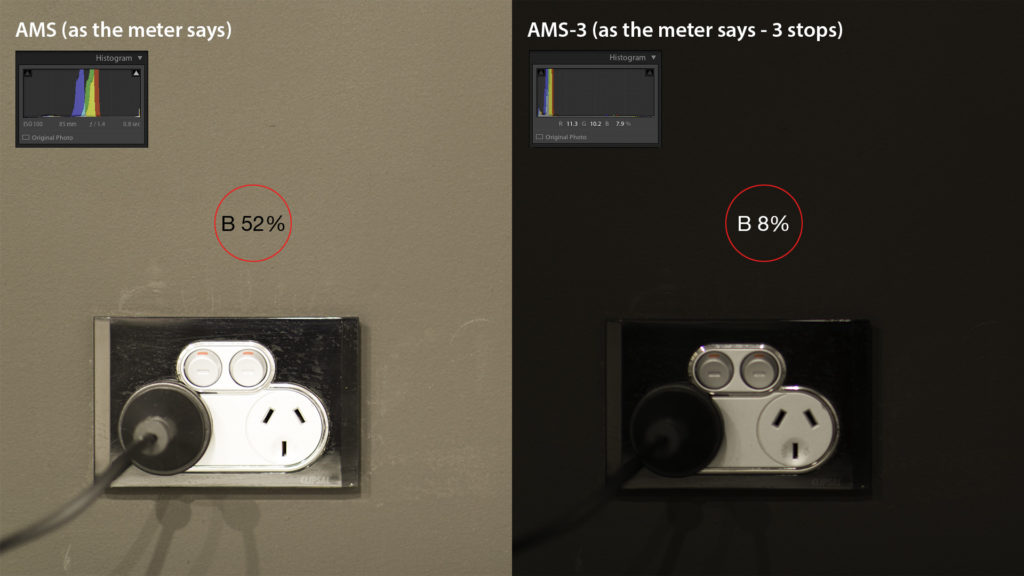A light meter is a dumb device. It has no idea as to the subject of it’s reading, and it has no way of factoring in any kind of emotional response to the content of the image. All it can do is make a judgement on the values in a scene, and calculate those values based on the type of metering mode being used (spot, average, center weighted, matrix, 3D etc….). In order to fully utilise a camera and light meter, it is critical that we understand what is happening, and how to over-ride the camera with our own judgements.
Ansel Adams The Negative 1981
A general-purpose reflected light meter reads about a 30º area of the subject. If pointed generally toward the subject it will give an average reading of all luminance within its field, but very often this reading does not yield the best exposure for securing a superior negative. It must be understood that such a reading is nothing more than the average of whatever luminance happen to fall within the area read by the meter. If the subject contains a roughly equal distribution of light and dark areas, such an average may produce an adequate exposure, at least for a ‘literal’ recoding; it will offer no opportunity for creative departure from the literal. With other subjects that are not average – a single figure in front of a large dark wall, for instance, or a backlighted portrait – a general average reading of the area will undoubtedly lead to erroneous exposure.
We must realise that the meter has no way of knowing what kind of subject it is directed at, or the proportion of light and dark areas in the subject. It is calibrated on the assumption that the subject is ‘average’. A subject in which the light and dark areas are not approximately equal will thus lead to uncertain exposure.
While the idea of the perfect exposure is subjective, the idea that we are able to achieve a desired result through understanding and control is very real. A well exposed camera RAW capture is one whose numbers indicate a representational histogram, but also one that captures the values and emotion of an image in a way that is suitable to the artist. We may not feel attached to the data and numbers of the capture, but having a comprehensive understanding of process is critical in enabling us as photographic artists to fully explore our subject in a way that connects to our aesthetic and emotional reactions.
Three Key Principles of Exposure
- Light meters operate through a known constant The value all light meters average for is middle grey. Making a reading from a surface with a single luminance value, and using that value to determine exposure, will render the surface as middle grey (regardless of the intended value. A ‘normal’ view will contain a mix of shadow, midtone and highlight values, which when averaged, should produce a normal exposure. This average is the goal of a light meter.
- Under exposure will render luminance values lower on the tonal scale than intended. Images that are under exposed are considered to have low contrast. Under exposure also results in flat images without key black and white points, and will render most tones as being unacceptable in a normal scene. image of under exposed scene.
- Over exposure will render luminance values higher on the tonal scale than intended. Images that are over exposed are considered to have high contrast, and will lack subtle midtones, in favor of blocked shadows and highlights. image of over exposed scene.
Exposure Value Guide
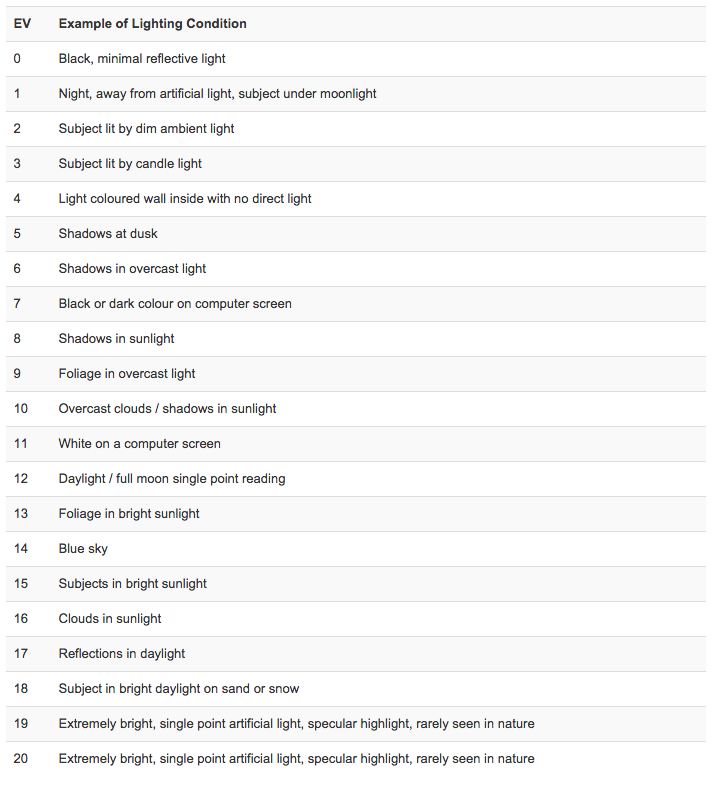
Exposure Conditions
We cannot assume that a camera / light meter will always get it right. The correct exposure is emotionally subjective, requiring a degree of input from the photographer, rather than blind faith in the devices ability to make aesthetic assumptions – the only assumption a camera can make is that an average of all values in the scene will be correct. Therefore, note the following ‘conditions’, where the camera light meter may not provide a ‘correct’ reading.
Exposure Condition A: Landscape Scene (Average meter mode)
The camera/meter will read the luminance values of the scene, determine the darkest and lightest values, then average them to ‘plot’ middle grey. The darkest values being shadows under trees, the lightest values reflections in water. The result may be ‘acceptable’. Levels from this image may spread across the entire tonal range.
The critical point is that the meter is averaging all the values in the scene, and assuming there are equal light and dark values (which in this case correct) and through averaging will arrive at a value that provides ‘correct’ exposure.
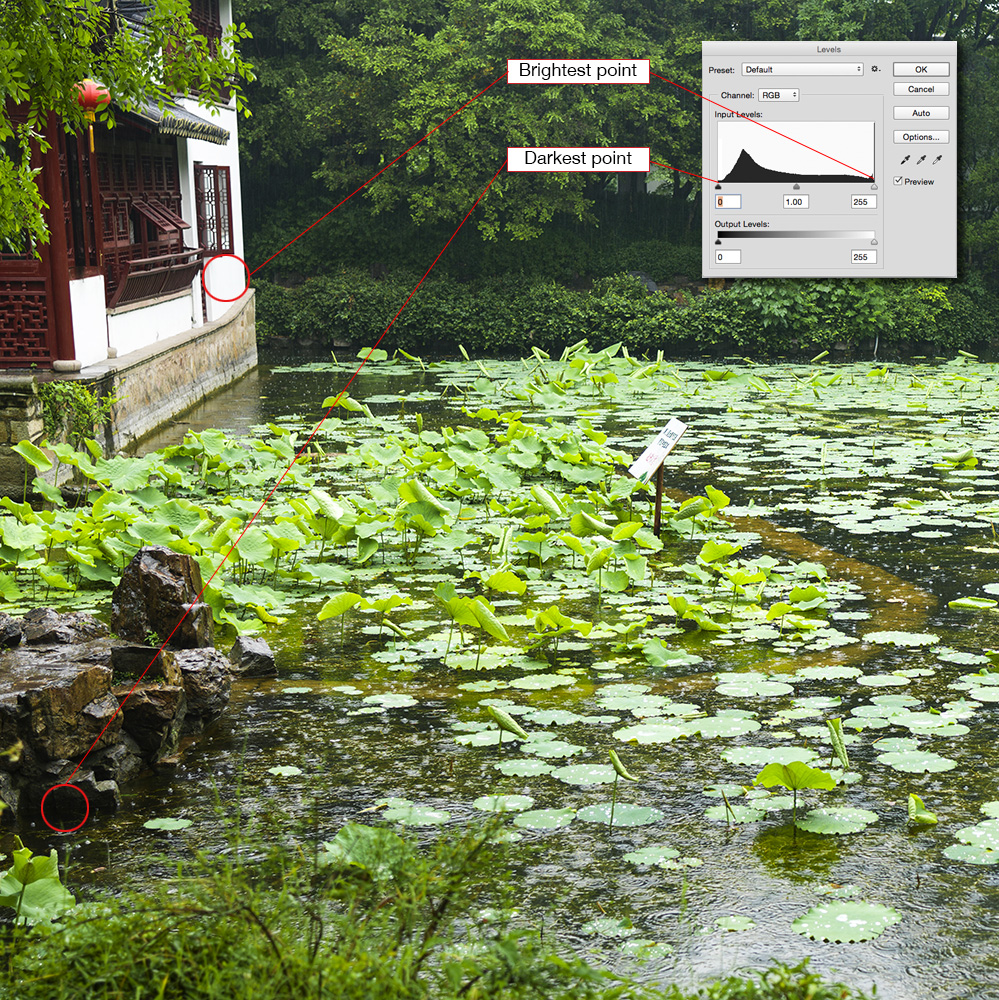
Shanghai Garden, China 2012 | Hasselblad H4D40, Average meter mode, no exposure compensation
Exposure condition B: Sand at the beach in summer (Centre weighted meter mode)
The camera / meter will read the luminance values of the sand, determine the darkest and lightest values, then average them to ‘plot’ middle grey. The darkest value is sand not in direct sunlight, the lightest value is sand in direct sunlight. Due to the scene containing a range of values that are of a similar luminance range, the meter will render sand as or towards middle grey, which will be too dark. The result may be ‘unacceptable’ Levels from this image may appear mostly in the middle range. In order to achieve a more accurate exposure of this scene, a exposure compensation of +3 stops is required. This can either be achieved by increasing the aperture, or decreasing the shutter speed.

Manly Beach, Sydney 2012 | Nikon D800e, Centre Weighted, 1/250sec @f/8 – no exposure compensation
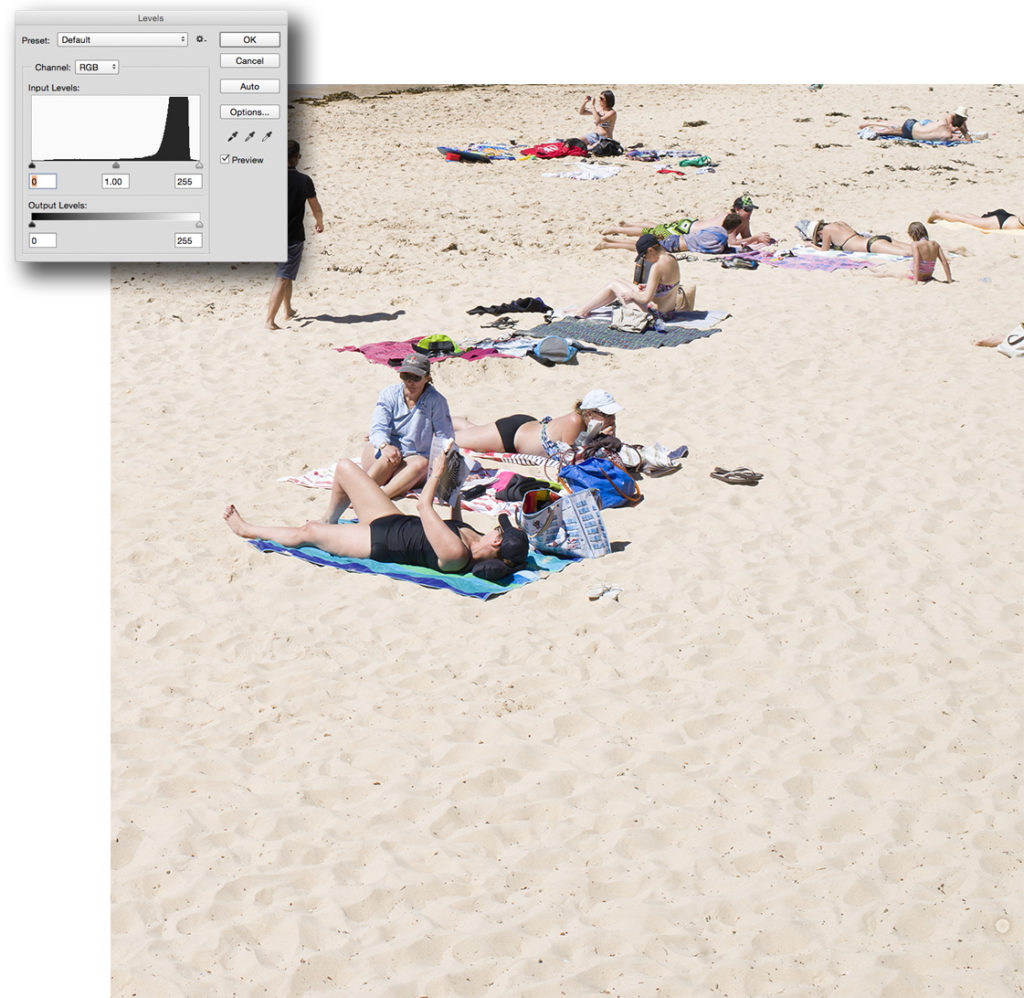
Manly Beach, Sydney 2012 | Nikon D800e, Centre Weighted, 1/250sec @f/8 – +3 stops exposure compensation
Exposure Condition C: White door / Black wall (Spot meter mode)
White door – The camera will read the single luminance value and render the scene middle grey – therefore under exposing the image (too dark). Levels will appear in the middle of the tonal range scale, rather than at the upper end.
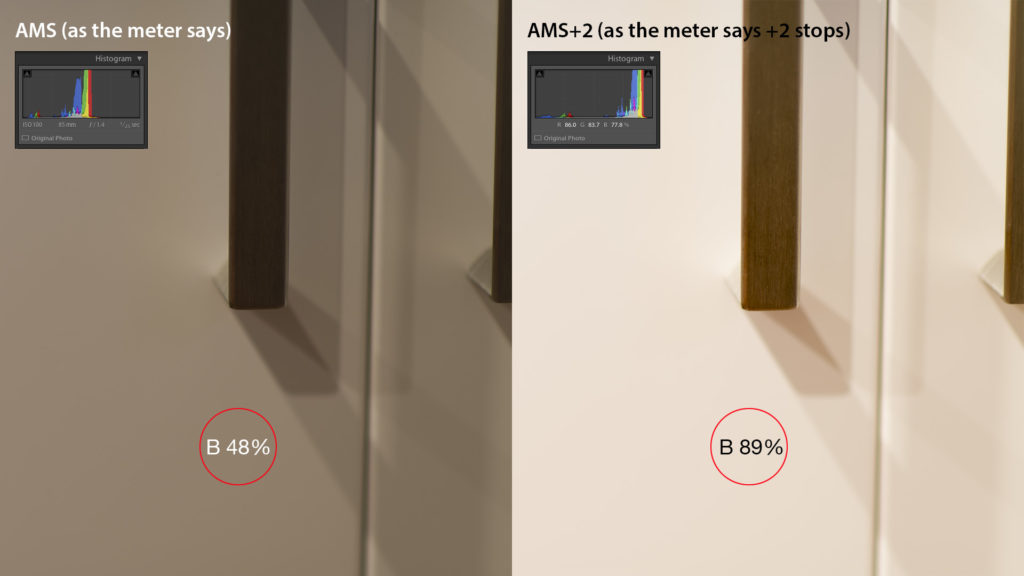
Black wall – The camera will read the single luminance value and render the scene middle grey – therefore over exposing the image (too bright). Levels will appear in the middle of the tonal range scale, rather than at the lower end.
